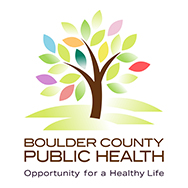Response to the Opioid Crisis in Boulder County
The opioid crisis is a complex issue, best understood through a variety of data sources covering health-related burden, in addition to both the social and legal ramifications of opioid misuse. The Opioid Advisory Group and Boulder County Public Health works with local and state partners to see trends across sectors, understand the current burden of the opioid epidemic in our community, and evaluate whether current strategies and programs are making a difference.
Boulder County Opioid Data
Data can tell us what is happening in our community, for example use of treatment services or drug possession events, as well as how outcomes are being impacted, such as hospitalizations and deaths connected with opioid use.
While in isolation, a single data point cannot tell a complete story, we hope by showing cross-sectoral data side-by-side, we tell a more complete story of the opioid epidemic in Boulder County and bring partners together to implement solutions.

















